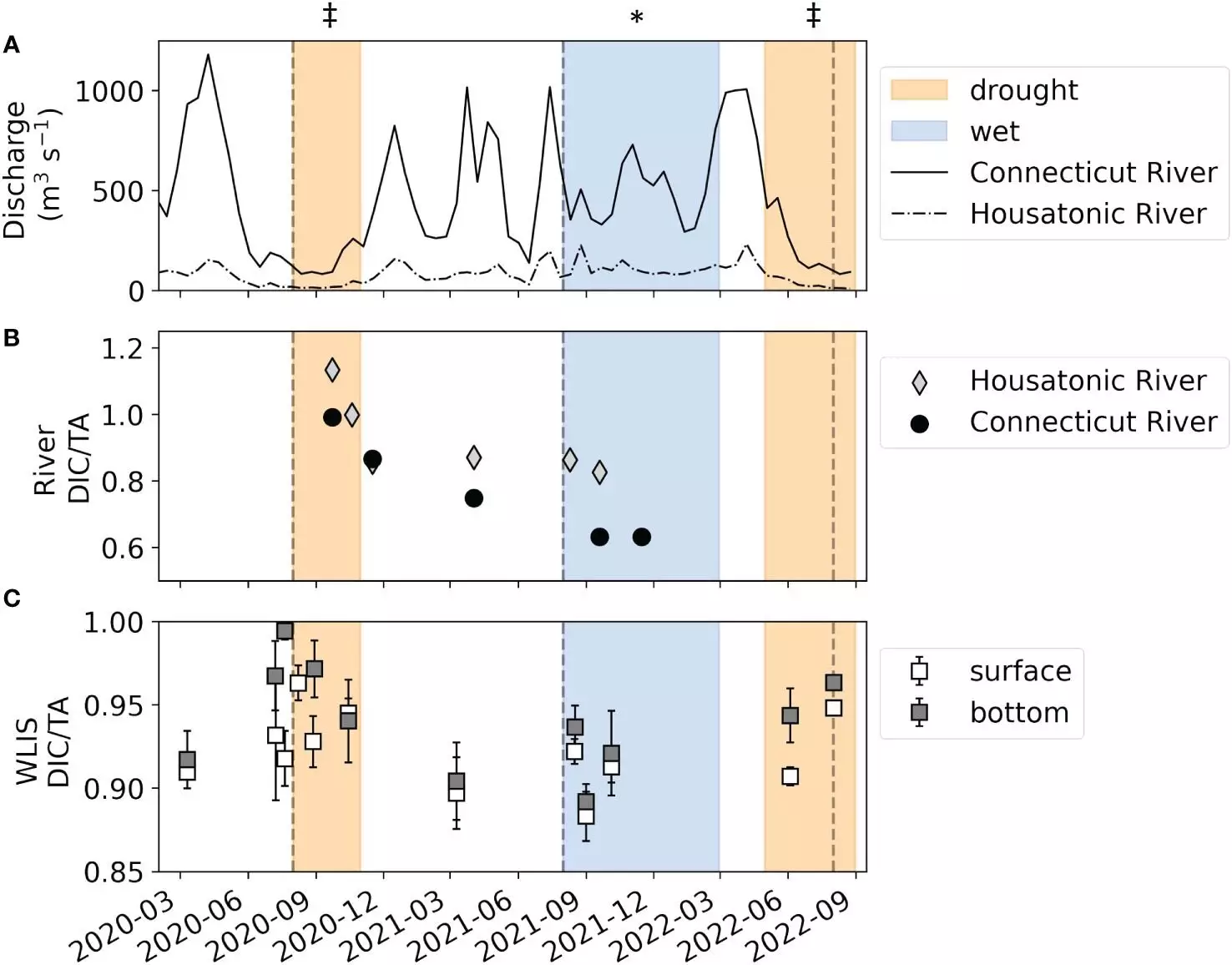Long Island Sound (LIS) is not just an inlet but a breathing sanctum of natural beauty and biodiversity nestled in the bustling urban tapestry of New York. This vital estuary serves as a passageway and home for diverse marine life while simultaneously playing a crucial economic role, supporting industries such as fishing, tourism, and transportation. Yet, this robustness is dangerously threatened by the very activities that have woven humans into its narrative. An alarming cocktail of urbanization and pollution has triggered a cascade of ecological challenges, specifically eutrophication and acidification, that are beckoning urgent attention and innovative solutions.
The Impacts of Urbanization on Marine Life
As cities thrive, the echoes of their vibrant pulse profoundly influence nearby natural habitats. In the case of Long Island Sound, the constant churn of passenger ferries, fishing vessels, and cargo ships generates not only relentless noise but also a surge of chemical and nutrient runoff. This influx triggers eutrophication—a process where nutrient over-enrichment leads to excess algae growth and subsequent depletion of oxygen levels vital for marine organisms’ survival. Algal blooms, which may seem innocuous, quickly morph into villains as they consume oxygen when they die and decompose, leading to hypoxic conditions. These conditions often spell doom for fish and other aquatic life, resulting in alarming mortality rates.
Research Breakthroughs on Acidification Links
Emerging research spearheaded by Lauren Barrett from the University of Connecticut unveils the intricate nexus between eutrophication and acidification in Long Island Sound. Scientists have discovered that the anthropogenic-induced increase in nitrogen—stemming from wastewater runoff, atmospheric deposition, and fertilizers—does not merely exacerbate hypoxia but also leads to acidification of marine waters. Researchers meticulously measured factors including dissolved organic carbon and total alkalinity, revealing that changes in these variables during critical periods significantly influence LIS’s carbonate system.
Further, they determined that extreme weather patterns, such as tropical storms, posed a bewildering shift in hydrology, complicating the nutrient dynamics and further intensifying the unfortunately cyclical pattern of degradation. With floods leading to surges in freshwater input and drought periods exacerbating hypoxic conditions, the research calls for adaptive management strategies to combat unpredictability driven by climate change.
The Role of Hydrology in Nutrient Dynamics
Understanding the hydrological inputs that feed Long Island Sound is imperative for mitigating the outlined challenges. Preliminary analysis shows that major tributaries like the Housatonic and Connecticut Rivers account for a staggering 85% of the total freshwater flow to LIS. Disturbingly, in 2021, rainfall dramatically increased river discharge following tropical storm events while subsequent droughts in 2020 and 2022 saw those figures plummet. As researchers connected the dots between these fluctuations and their effects on eutrophication and acidification, it became apparent that climate change is not merely a background concern, but a central actor in this aquatic drama.
During periods of significant rainfall, total alkalinity peaked near the Sound’s mouth and exhibited decreasing levels as one moved westward. Conversely, during lower discharge seasons, the resultant increase in dissolved organic carbon mirrored an alarming rise in acidification. This variance highlights the urgent need for a treatment of LIS not solely as a static entity, but as a dynamic system that continually interacts with both anthropogenic and natural forces.
Future Directions in Protecting Long Island Sound
While progress has been made—evidenced by a notable 58.5% reduction in nitrogen input following the incorporation of nitrogen total maximum daily loads—challenges persist. This leads to a pressing dilemma: as droughts become more frequent and severe with the advancing specter of climate change, how do we effectively adapt our conservation strategies? Current measures to curtail nitrogen runoff may prove insufficient unless they are rapidly revisited and revamped. It’s clear that we stand at a critical crossroad, where our actions—or lack thereof—will greatly impact the future health and vitality of Long Island Sound.
Long Island Sound is not merely a backdrop for human activity; it is a living system that demands respect and immediate action. We owe it not only to the local ecosystems but also to future generations to forge a renewable relationship with the natural environment. As we seek innovative solutions to combat these intertwined crises, we hold the responsibility to safeguard the legacy and health of this richly endowed marine ecosystem. The time for decisive action is now, lest we allow the once-resilient waters of Long Island Sound to slip away into a state of irreversible decline.


Leave a Reply